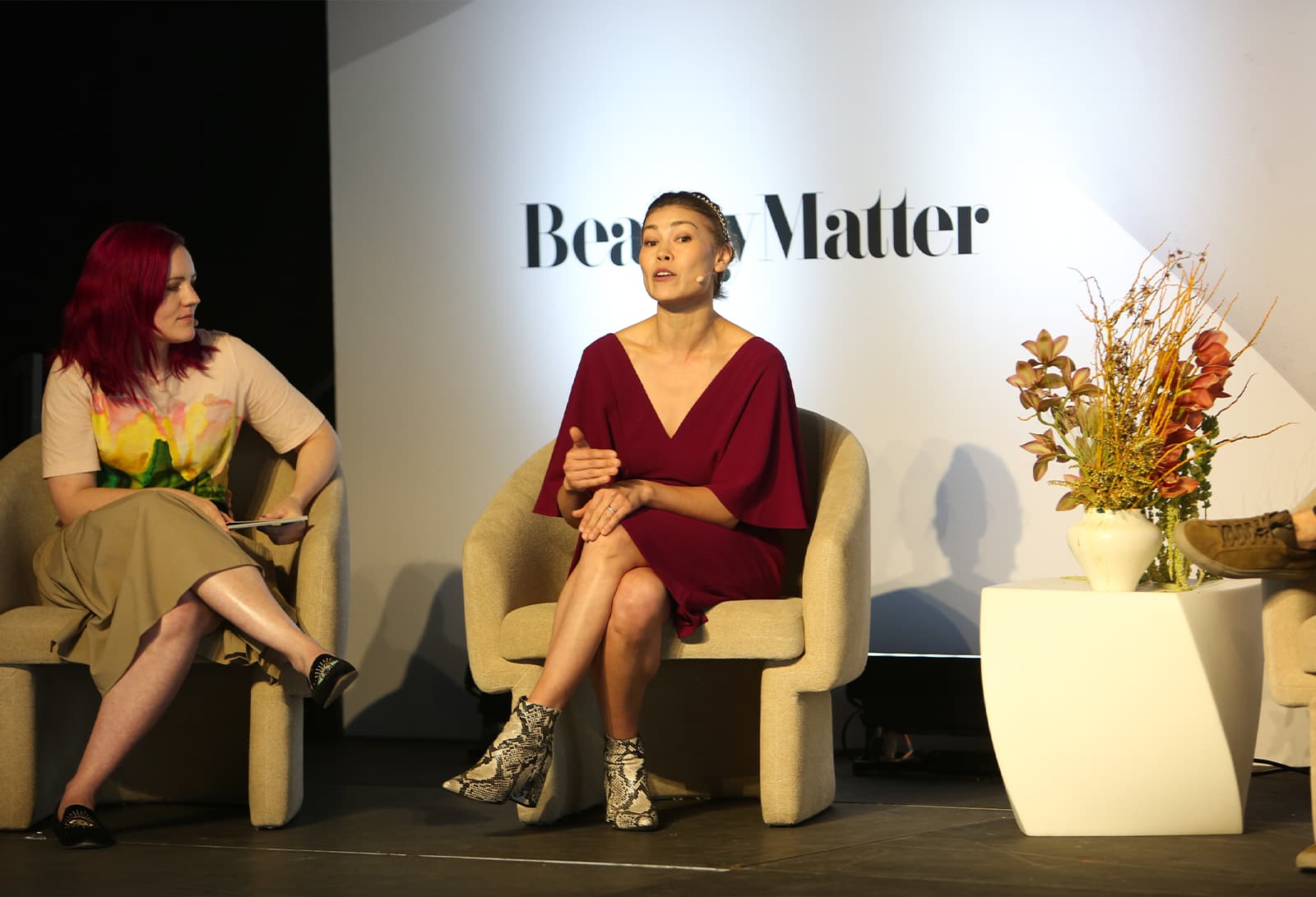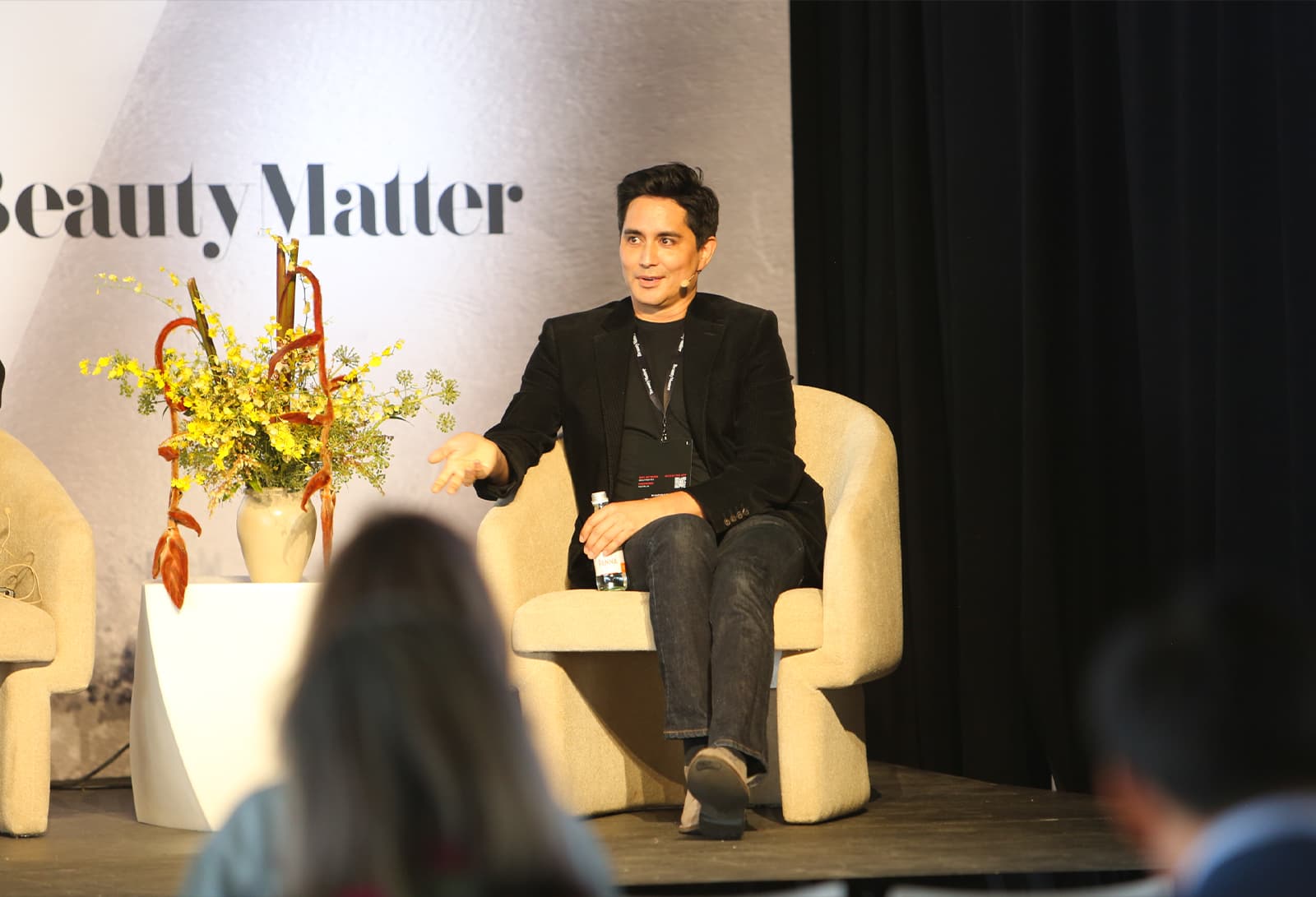The beauty industry is undergoing a transformative shift, as a new generation of founders are harnessing the power of science to deliver innovative, effective, and transparent products to consumers. BeautyMatter's 2024 NEXT Summit brought together the leaders of four pioneering brands—Sweet Chemistry, Veracity, Mother Science, and Jupiter—to share their unique stories and insights on this emerging trend. Moderated by BeautyMatter Editor Carla Seipp, the panel explored the motivations, challenges, and strategies behind these science-focused brands.
For the founders, the decision to launch their brands was deeply personal. Ali Egan of Veracity shared how her own health journey with Hashimoto's disease inspired her to create a brand focused on functional health and science-backed alternatives. "I wanted to bring this power to the way that people are thinking about taking care of themselves every day," she explained. “At Veracity, our goal is to provide science-backed, drug-free alternatives and, through our content and education, help individuals become better CEOs of their own health.”
Robbie Salter of Jupiter had a similarly serendipitous start, recounting how a bout of dandruff led him to develop an elevated, salon-quality product to address the issue. Disappointed by the uninspiring options available at drugstores, he decided to create something better. "I had probably just enough stupidity and hubris to say, ‘I can do it better,’" he joked.
Salter ultimately launched a fake brand online to gauge interest and discover whether others shared his dandruff concerns. It turned out that many women were also seeking an elevated, salon-quality product that also delivered the efficacy they needed.
In contrast, Alec Batis of Sweet Chemistry and Anne Marie Simpson-Einziger of Mother Science brought deep industry experience to the table. Batis, a former Pfizer and L'Oréal group chemist, understood the importance of "injecting the sexiness into science" and "weaving storytelling into statistics." Simpson-Einziger, with a background as a chemistry teacher who dabbled in pharmaceutical research, discovered a unique molecule that became the foundation for Mother Science's groundbreaking skincare.
"We didn't intend to start a biotech skincare brand, but we did discover the molecule. With the privilege of working with some of the best scientists in the world to characterize its properties, we realized that its potential for skin health and beauty went far beyond merely publishing papers, which I enjoyed. But the highest purpose is to make something that transforms the lives of everyone who uses it," says Simpson-Einziger.
While the panelists' motivations varied, they all faced the common challenge of navigating the beauty industry's traditional trajectory and timeline. As Simpson-Einziger explained, "We go at the speed of science, and science can sometimes be slow." This patient, data-driven approach stood in stark contrast to the industry's often frenetic pace of new product launches.
Salter described the experience as "maddening," acknowledging the necessary time and rigor required for effective product development. "It takes time, and you have to wait and you have to test," he said. "Good things come to those who wait."
Batis, however, noted that his team was able to "cheat" a bit by leveraging the extensive research and development already conducted by their scientific partners at Xylyx Bio. This allowed them to accelerate the process, though he emphasized the importance of maintaining a robust R&D pipeline for future innovations.
Financing these science-driven ventures also proved to be a significant hurdle. Egan noted that the longer payback periods associated with science-based businesses often conflict with the expectations of traditional beauty investors, who typically anticipate quicker returns. "If we want to be serious about health and science in beauty, we need to realign investor expectations regarding the necessary investment and extended development timelines," she says. Egan emphasized the importance of a capital structure that accommodates the realities of developing truly innovative, science-backed products.
A key differentiator for these brands is their focus on owning the intellectual property (IP) behind their core technologies and ingredients. For Simpson-Einziger and Mother Science, this was a crucial strategic decision.
"Owning IP protects your most valuable asset; your technology is what gives you an unfair advantage when you come into a really crowded beauty space," says Simpson-Einziger. By developing their molecule, malassezin, through a separate therapeutic company, Versicolor Technologies, Mother Science was able to establish a strong patent portfolio and pipeline of future innovations.


Batis echoed the importance of IP, noting that it was a central focus for Sweet Chemistry's investors and a key differentiator in the market. He described a recent, costly legal process to ensure that the IP was correctly assigned to the brand rather than remaining solely with their scientific partners at Xylyx Bio.
"This focus on IP will set us apart from the venture capital and private equity sectors when it comes time for an exit. That's why we prioritize it in our R&D plan; we actually allocate a budget specifically for the 'R' in R&D. This allows us to invest in technologies that will emerge in three, five, and even seven years. We are deeply committed to protecting our intellectual property,” says Batis.
The panelists emphasized the importance of ensuring diverse representation in clinical testing, with Simpson-Einziger sharing how she intentionally included a wide range of Fitzpatrick skin tones to evaluate the efficacy of the brand’s malassezin molecule.
“One of our claims is that our product is highly effective for hyperpigmentation. Traditionally, clinical studies typically rely on lighter Fitzpatrick tones because they show easier results. Unfortunately, individuals with darker Fitzpatrick tones often struggle to find effective hyperpigmentation products, which is why we made it a priority to ensure that we were indexing to test the most difficult skin tones that were not traditionally represented in these kinds of tests,” she says.
The group also discussed the complementary roles of consumer testing, which provides real-world feedback and rigorous clinical testing to validate product efficacy. They acknowledged the need for a balance and the potential for more accessible and affordable testing methods in the future.
“I think what we're going to see is certainly that testing is hopefully going to become cheaper and more accessible,” predicts Salter. “There’s a growing interest in citizen science, and both types of testing are crucial. One provides factual data, while the other reflects user experience. It’s important that they work hand in hand, allowing customers to appreciate the science behind their experiences. Overall, I think we’re moving toward a more democratized approach.”
One of the key topics discussed towards the end of the panel was the process of writing patents to protect the intellectual property (IP) behind these science-backed beauty innovations. When an audience member asked Simpson-Einziger about how she approached writing their patents, she provided a detailed overview:
"The first call I made when I realized malassezin had the potential to be something powerful was to Proskauer [Rose], a patent attorney firm with a strong life sciences division,” she says. “I wrote the perspectives myself, pulling together all the existing data. They quickly researched and discovered a white space for our molecule, which is quite rare. Often, when you create a new molecule, someone has already patented it and built a fortress around it."
Simpson-Einziger emphasized the importance of having strong data and experiments to support the patent applications, explaining this allowed them to establish a robust patent portfolio and pipeline of future innovations. To date, she has patented over 50 molecules.
"When we discovered that malassezin was not covered in the patent space, we knew we had to seize the opportunity. The perspective provided background literature on what had already been accomplished in the microbiomic area, which we could reference while building out the necessary experiments to create a strong patent. They advised us on the experiments and data we needed and the analogs to synthesize to construct our fortress of IP."
This thorough approach to patenting their core technology was crucial for Mother Science. By documenting their innovations meticulously, Mother Science established a strong foundation for their science-driven brand.
Key Takeaways: